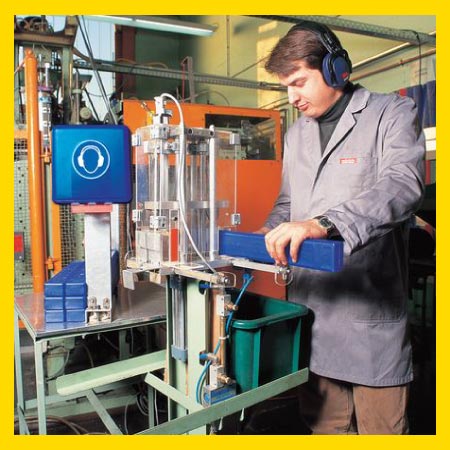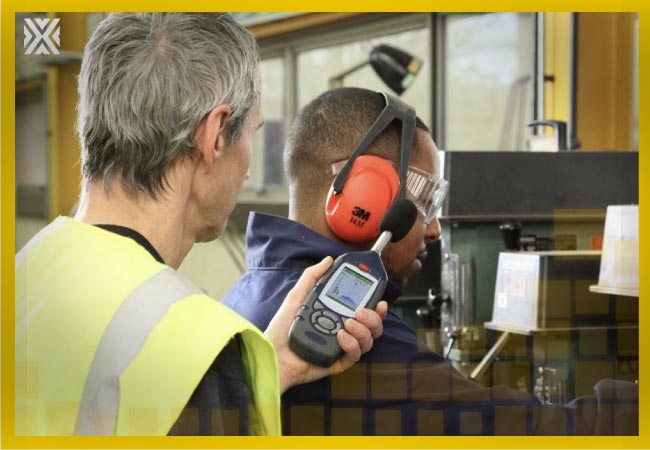Currency
June 07, 2022

Employers in Great Britain need to ensure that they are ready to provide the same level of hearing protection to workers who carry out casual work as employees who have a contract of employment when updated personal protective equipment (PPE) regulations come into force on April 6th 2022.

The amendment to the Personal Protective Equipment at Work Regulations extends employers’ and employees’ duties to all workers, regardless of employment type. The news follows the recent revision to the Control of Noise at Work Regulations, which places an emphasis on the priority of control of exposure and risk at the source.
The Control of Noise at Work Regulations follow European Union Directives to ensure that workers’ hearing is protected from excessive noise. The level at which employers must provide hearing protection and hearing protection zones is 85 dB(A) (daily or weekly average exposure) and the level at which employers must assess the risk to workers’ health and provide them with information and training and access to PPE is 80 dB(A). Noise levels between 80-85 dB(A) are comparable to the sound of heavy traffic or a noisy restaurant.
The Personal Protective Equipment at Work (Amendment) Regulations 2022 (PPER 2022) will require employers to protect casual workers as well as full-time employees.
Noise monitoring provides accurate insights into the noise levels of a working environment so that businesses can identify problem areas and ensure they adhere to health and safety regulations. However, professionals undertaking the monitoring should be trained and prepared sufficiently with the right equipment as minor errors in noise level estimates can lead to major errors in exposure calculations. Inaccurate estimates can risk worker health, employer prosecution and unnecessary expenses undertaking exposure limiting measures based on inaccurate data.
Two pieces of equipment used for the assessment are the sound level meter, primarily designed as a hand-held device used by an operator, and the noise dosimeter, which a staff member wears for their working shift. A sound level meter is an ideal solution for measuring the overall noise level of a task, piece of machinery or area. On the other hand, dosimeters are best for personal noise measurements where workers are mobile, or it is difficult or unsafe to get close to employees with a sound-level meter because dosimeters are smaller and body-mounted. For example, a dosimeter would be ideal for forklift truck drivers exposed to many different noise levels and irregular working patterns.
If a risk assessment establishes that noise levels pose a risk to workers, personal hearing protection should be supplied immediately while other more permanent solutions are implemented. However, personal hearing protection should only be considered the primary solution when all other options have been exhausted as control of noise at the source is the ultimate priority. Other measures can reduce exposure by reducing the time a worker is exposed to loud noise, such as physically separating staff from the noisiest areas or rotating shifts to spread individual exposure.
There are two main types of exposure that need to be measured or calculated: the LAEP,d, which is the daily noise exposure (or average over a week if daily variation in exposure occurs) and LCPeak, which addresses protection from instantaneous damage to hearing when the peak noise is measured. The action levels within the directive have acceptable values for both these parameters.
A high-quality sound level meter or dose meter will be able to calculate these values but care must be taken with the LEP,d to ensure that the correct exposure time for the noise is measured or considered in the exposure calculation, accounting for work patterns and breaks.
A brief summary of when hearing protection needs to be worn relative to these action levels is:
Below an LAEP,d of 80dB(A) or LCPeak of 135dB(C) hearing protection does not have to be worn.
With an LAEP,d of between 80dB(A) and 85dB(A) and an LCPeak of 135dB(C) and 137dB(C) hearing protection should be made available to employees but it is not compulsory to wear protection.
With an LAEP,d over 85dB(A) or an LCPeak of 137dB(C) employees must wear the hearing protection provided and employers will need to provide training on correct usage.
There is also an exposure limit value at the ear, considering the attenuation of the hearing protection, which cannot be exceeded. The exposure limit values correspond to an LAEP,d of 87dB(A) or an LCPeak of 140dB(C). If employees are exposed to such levels, work should be stopped immediately until control measures can be put in place to reduce the noise below these limits.
https://www.hsimagazine.com/press-release/listen-up-employers-must-provide-the-same-level-of-hearing-protection-to-all-workers-under-amended-ppe-regulations/

The amendment to the Personal Protective Equipment at Work Regulations extends employers’ and employees’ duties to all workers, regardless of employment type. The news follows the recent revision to the Control of Noise at Work Regulations, which places an emphasis on the priority of control of exposure and risk at the source.
Understanding Legal Requirements
The Control of Noise at Work Regulations follow European Union Directives to ensure that workers’ hearing is protected from excessive noise. The level at which employers must provide hearing protection and hearing protection zones is 85 dB(A) (daily or weekly average exposure) and the level at which employers must assess the risk to workers’ health and provide them with information and training and access to PPE is 80 dB(A). Noise levels between 80-85 dB(A) are comparable to the sound of heavy traffic or a noisy restaurant.
The Personal Protective Equipment at Work (Amendment) Regulations 2022 (PPER 2022) will require employers to protect casual workers as well as full-time employees.
Using Noise Monitoring to Gather Accurate Insights
Noise monitoring provides accurate insights into the noise levels of a working environment so that businesses can identify problem areas and ensure they adhere to health and safety regulations. However, professionals undertaking the monitoring should be trained and prepared sufficiently with the right equipment as minor errors in noise level estimates can lead to major errors in exposure calculations. Inaccurate estimates can risk worker health, employer prosecution and unnecessary expenses undertaking exposure limiting measures based on inaccurate data.
Two pieces of equipment used for the assessment are the sound level meter, primarily designed as a hand-held device used by an operator, and the noise dosimeter, which a staff member wears for their working shift. A sound level meter is an ideal solution for measuring the overall noise level of a task, piece of machinery or area. On the other hand, dosimeters are best for personal noise measurements where workers are mobile, or it is difficult or unsafe to get close to employees with a sound-level meter because dosimeters are smaller and body-mounted. For example, a dosimeter would be ideal for forklift truck drivers exposed to many different noise levels and irregular working patterns.
Implementing Safety Measures
If a risk assessment establishes that noise levels pose a risk to workers, personal hearing protection should be supplied immediately while other more permanent solutions are implemented. However, personal hearing protection should only be considered the primary solution when all other options have been exhausted as control of noise at the source is the ultimate priority. Other measures can reduce exposure by reducing the time a worker is exposed to loud noise, such as physically separating staff from the noisiest areas or rotating shifts to spread individual exposure.
Conducting a Noise Survey
There are two main types of exposure that need to be measured or calculated: the LAEP,d, which is the daily noise exposure (or average over a week if daily variation in exposure occurs) and LCPeak, which addresses protection from instantaneous damage to hearing when the peak noise is measured. The action levels within the directive have acceptable values for both these parameters.
A high-quality sound level meter or dose meter will be able to calculate these values but care must be taken with the LEP,d to ensure that the correct exposure time for the noise is measured or considered in the exposure calculation, accounting for work patterns and breaks.
A brief summary of when hearing protection needs to be worn relative to these action levels is:
Below the First Action Levels
Below an LAEP,d of 80dB(A) or LCPeak of 135dB(C) hearing protection does not have to be worn.
Between the First and Second Action Levels
With an LAEP,d of between 80dB(A) and 85dB(A) and an LCPeak of 135dB(C) and 137dB(C) hearing protection should be made available to employees but it is not compulsory to wear protection.
Above the Second Action Levels
With an LAEP,d over 85dB(A) or an LCPeak of 137dB(C) employees must wear the hearing protection provided and employers will need to provide training on correct usage.
There is also an exposure limit value at the ear, considering the attenuation of the hearing protection, which cannot be exceeded. The exposure limit values correspond to an LAEP,d of 87dB(A) or an LCPeak of 140dB(C). If employees are exposed to such levels, work should be stopped immediately until control measures can be put in place to reduce the noise below these limits.
SOURCE:
https://www.hsimagazine.com/press-release/listen-up-employers-must-provide-the-same-level-of-hearing-protection-to-all-workers-under-amended-ppe-regulations/









